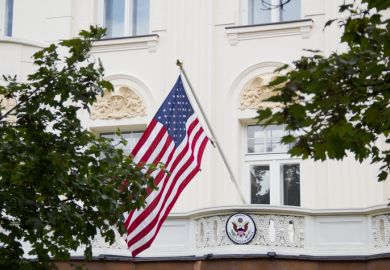The secret to a winning grant proposal lies in blending analytic and narrative writing styles, according to a linguistic study comparing successful and failed European Research Council applications.
In general, complex writing with longer sentences, more jargon and a strong narrative style were all linked to higher scoring applications for the ERC’s Starting Grant, which offers early career academics up to €1.5 million (£1.23 million) over a period of five years, says a paper published in the Journal of Informetrics.
According to study author Peter van den Besselaar, an emeritus professor at Vrije Universiteit Amsterdam, the secret is balancing narrative and analytical writing styles.
“It should be kind of a blend. They should write a smoothly readable application which is still analytic,” he said. That may mean a dense text deploying technical nouns, but which carries readers through with a narrative, such as by using personal pronouns.
Professor van den Besselaar and his co-author Charlie Mom found that their chosen linguistic features, such as the number of words per sentence, only predicted success in the first stage of the two-step ERC assessment, which only a quarter of proposals survive.
“Reviewers and panel members may be willing to spend more time even if they do not understand things very well,” said Professor van den Besselaar, explaining why writing style may be less influential once proposals pass to specialist reviewers in the second stage.
The authors raise concerns that writing style could soon become even more influential with a push towards qualitative approaches in research assessment, such as narrative CVs.
“Perfectly written narrative CVs (and grant applications) may be more informative, but could likewise be a smart way of overselling, resulting in biased grant selection,” they write.
Maciej Eder, an associate professor at the Pedagogical University of Kraków specialising in computer-assisted text analysis and a panel chair for the 2021 Starting Grant round, agreed that style was “one of those elements that somehow do affect the final decision. There are always some tiny, tiny elements that make a good, strong proposal even better.”
Previous work has found that readability, complexity and confidence all figure in a proposal’s success, but style is a complex phenomenon and taste probably plays a part in what works best.
“I wouldn’t see this as the analytical versus anything else,” said Dr Eder. “I would say clear, very much to the point, not very well elaborated but a very clear style – that’s what makes a good proposal very good.”
The authors used software to read the abstract, project description and CV sections of 2,532 applications from 2014.
POSTSCRIPT:
Print headline: Grant success lies in story and analysis blend
Register to continue
Why register?
- Registration is free and only takes a moment
- Once registered, you can read 3 articles a month
- Sign up for our newsletter
Subscribe
Or subscribe for unlimited access to:
- Unlimited access to news, views, insights & reviews
- Digital editions
- Digital access to THE’s university and college rankings analysis
Already registered or a current subscriber?








